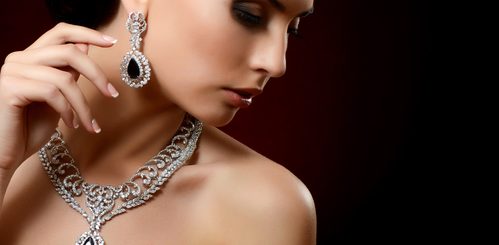Getting To Know Edwardian Jewelry

Estate jewelry can be broken down into various time periods, one of which is the Edwardian era. This consists of jewelry which was manufactured from 1901 until 1915 and the name is taken from Edward VII, the King of England. He was fond of luxury, and jewelry played an important role in the lifestyles of the English upper class during his reign.
Edwardian Jewelry Characteristics
During the final decade of the 19th century, people begin to reject the machine produced jewelry which had been seen as revolutionary earlier in the century. Instead there was a growing demand for jewelry which was custom made by hand, and which was sizeable and ostentatious. Edwardian jewels were similar to jewelry produced during the 18th century. Many designers were inspired by the Palace of Versailles in France and the regal designs that their nobles wore.
Due to the existence of pictorial records and ornamental guides, this made it easier for jewelers to come up with designs which were inspired by previous eras. However, Edwardian jewelry was not a complete copy of older styles. It incorporated certain elements such as bow knots, ribbons, tassels and garlands. The discovery of new platinum fabrication methods during the same time period further contributed to Edwardian Jewelry. While older platinum products had gold backing, the oxyacetylene torch which was invented in 1903 allowed for temperatures that made it easier to work with platinum and for the first time complete platinum jewelry could be made.
Brooches Form A Key Component Of This Jewelry
Brooches play an important role in Edwardian jewelry, and were made with both platinum and diamonds. Small brooches which featured motifs such as circles, bows and garlands were frequently worn, as were colored stones and bar brooches which were linear. The bow in particular was one of the most celebrated shapes of this era and many were designed emulate certain fabrics.
The jewelry that women wore around their necks during this time is quite distinctive. By 1910 brooches had fallen out of favor for necklaces, and while some were simple chains from which a gemstone hung, others use double pendants. Big necklace pendants would often be circular in appearance and would contains motifs which were either geometric or garland. Pearls were also popular and would often be combined with a tassel that was fringed. Long chains comprised of links made of platinum or gems would be worn and would sometimes fall beneath the waste.
Although earrings during the early Edwardian period typically used basic studs made of diamond, later they were phased out in favor of openwork designs which were more fragile. Earrings tended to be long and glittering with small wreaths or center stones. These earrings were designed in such a way where they would swing and move with garments which were lighter, and to many fashion historians the earrings of this period were one of its most notable and iconic characteristics.


